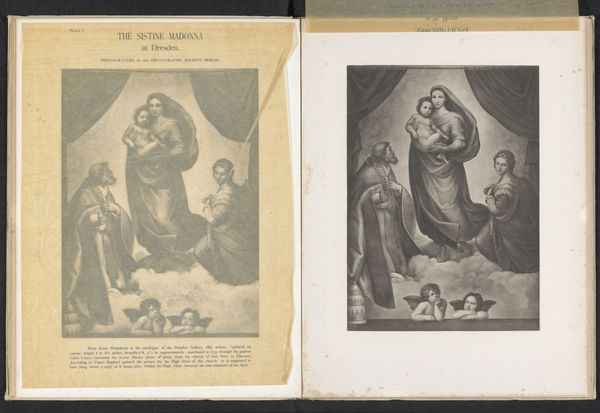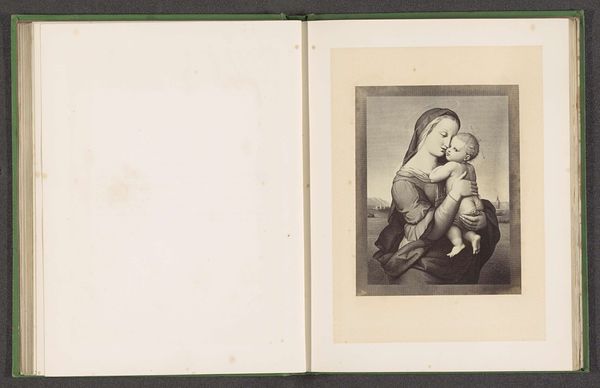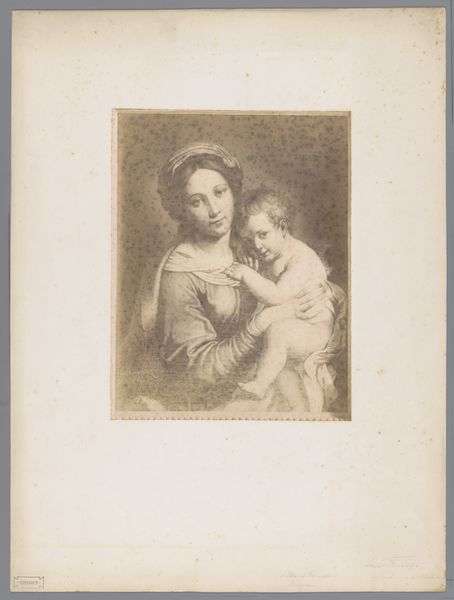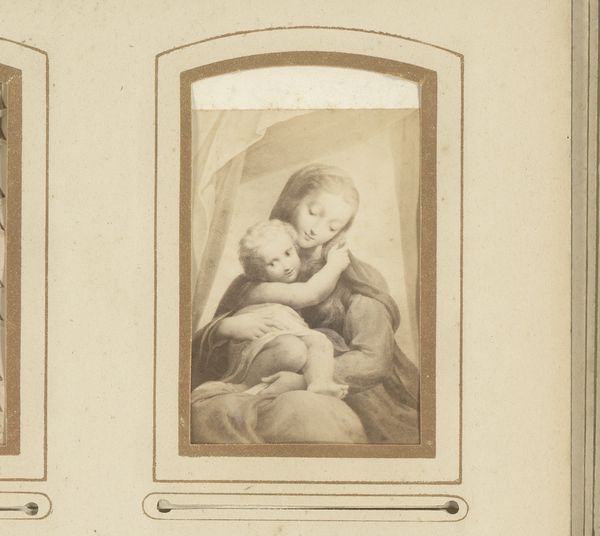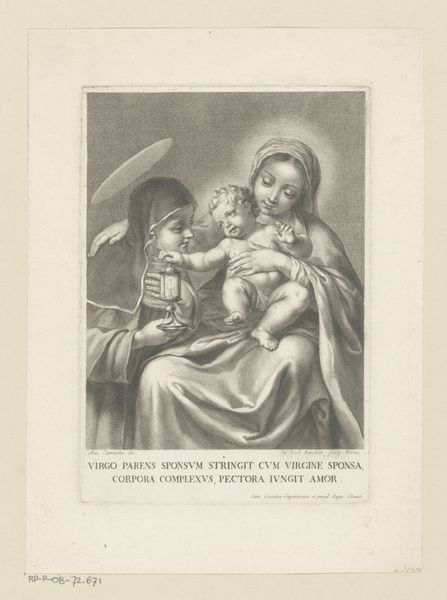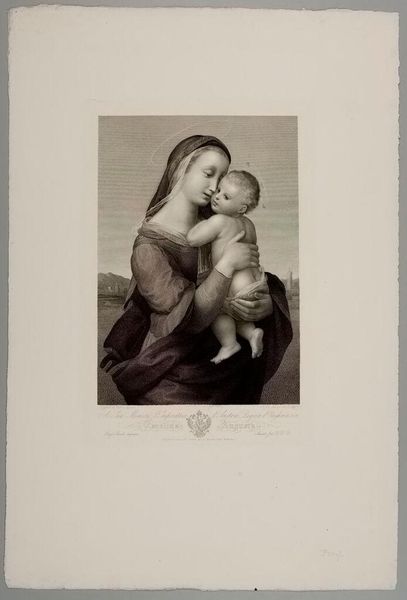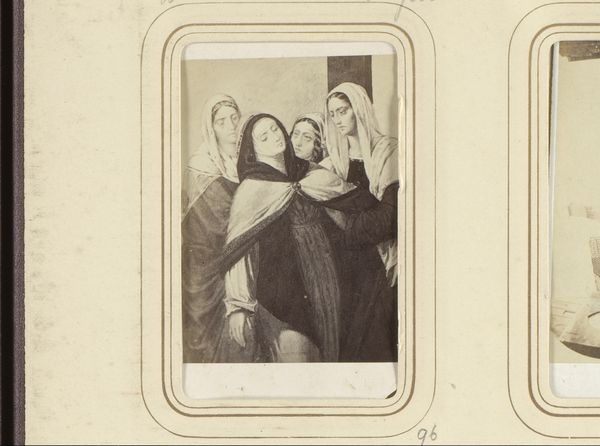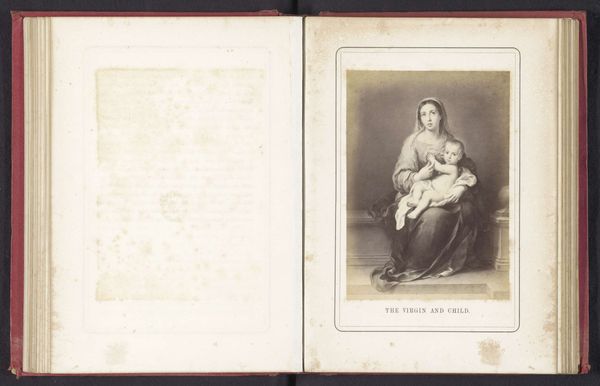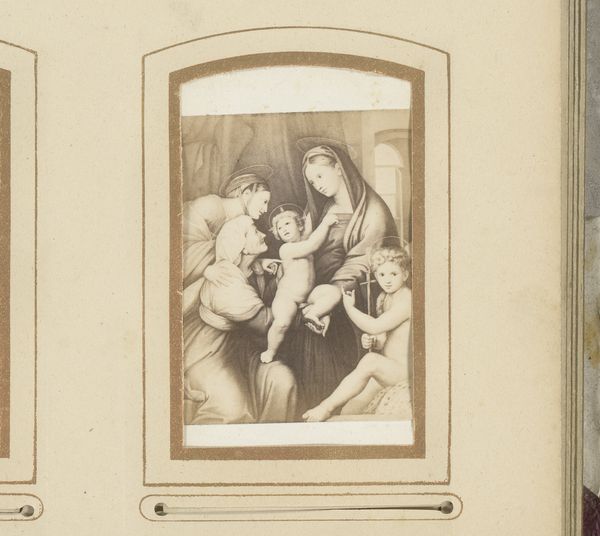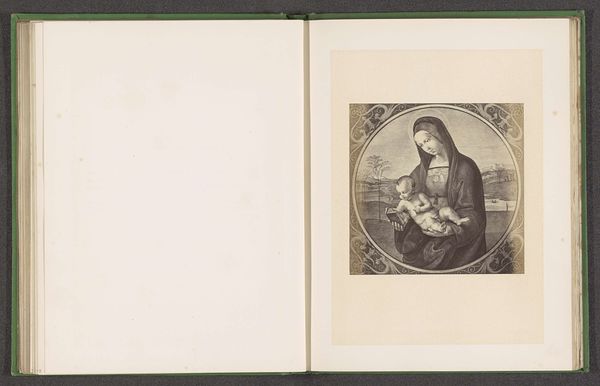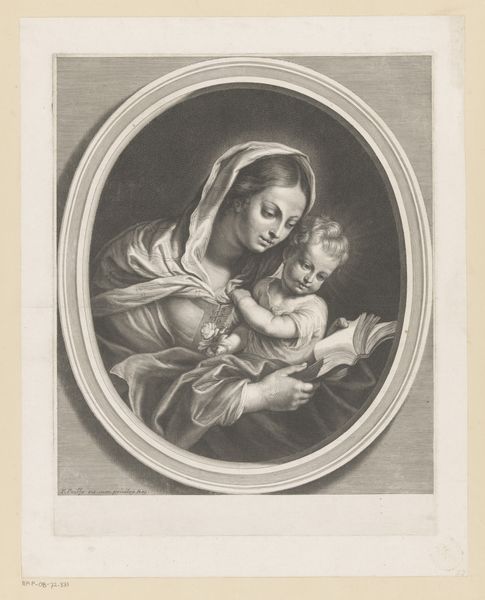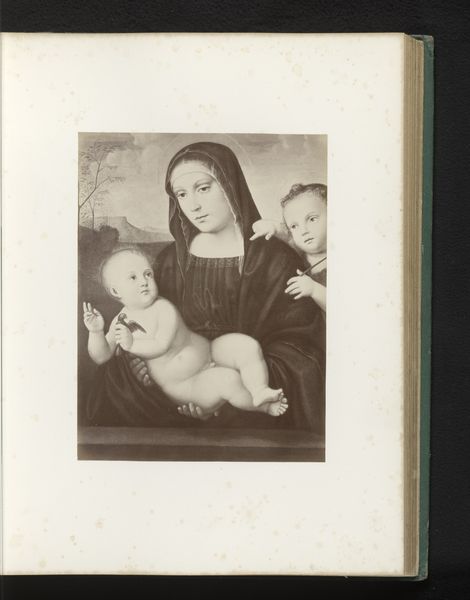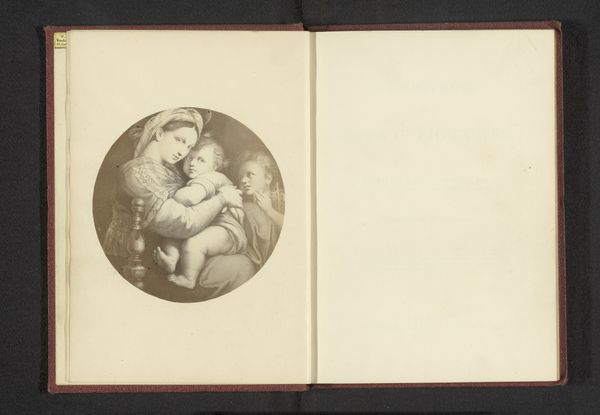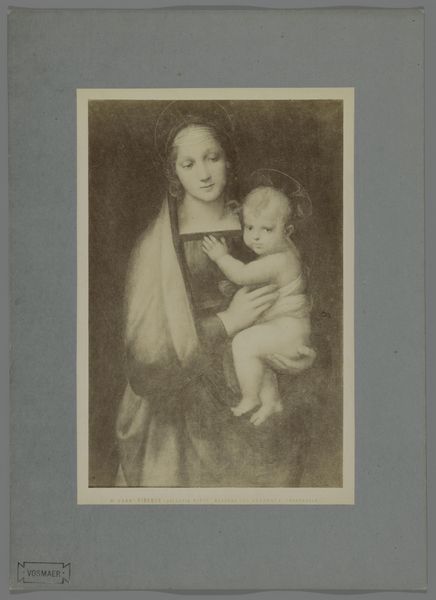
Reproductie van een detail van de Sixtijnse Madonna door Rafaël before 1895
0:00
0:00
print, photography
#
portrait
# print
#
figuration
#
11_renaissance
#
photography
#
coloured pencil
#
history-painting
#
italian-renaissance
Dimensions: height 208 mm, width 172 mm
Copyright: Rijks Museum: Open Domain
Curator: Here we have a reproduction of a detail from Raphael's "Sixtine Madonna," made before 1895 by Photographische Gesellschaft. It is presented as a print, a photographic reproduction of a Renaissance masterpiece. Editor: The muted tones give it a somewhat melancholic air, despite the Madonna and child theme. I find the texture of the print intriguing—it's clearly an attempt to capture the delicacy of the original painting, but the medium itself adds a layer of remove. Curator: It’s interesting to consider the labor involved in creating such a reproduction. Photographische Gesellschaft, a company specializing in photographic prints, mechanically reproduced a celebrated painting. What does this do to the aura of the artwork? Is it diluted or democratized? Editor: That's precisely the tension I see. This reproductive act situates the original work within a broader social context, where access and dissemination become political. Who had access to Raphael’s original versus who now had access to a reproduction? The shift is significant. It speaks volumes about cultural power and the means of distribution during that period. Curator: The materiality matters too. The print-making process itself would have been subject to specific industrial techniques. Think about the paper used, the inks, the machinery, the specialized skills of the artisans producing this reproduction on a mass scale. These details are often overlooked, overshadowed by our focus on the "artist" Raphael. Editor: Absolutely. And consider the intended audience. This print likely circulated among middle-class homes or educational institutions. This detail is crucial for understanding how ideas about art, religion, and motherhood were shaped and disseminated across social strata. The iconography of the Madonna gets repackaged for broader consumption. Curator: So, while seemingly just a reproduction of a classical painting, the materiality and means of production tell us so much about the late 19th-century art market and society's changing relationship with art. Editor: It highlights the commodification of the sacred image while pointing towards a wider accessibility—a complex, compelling push and pull between reverence and access, a true material document.
Comments
No comments
Be the first to comment and join the conversation on the ultimate creative platform.
